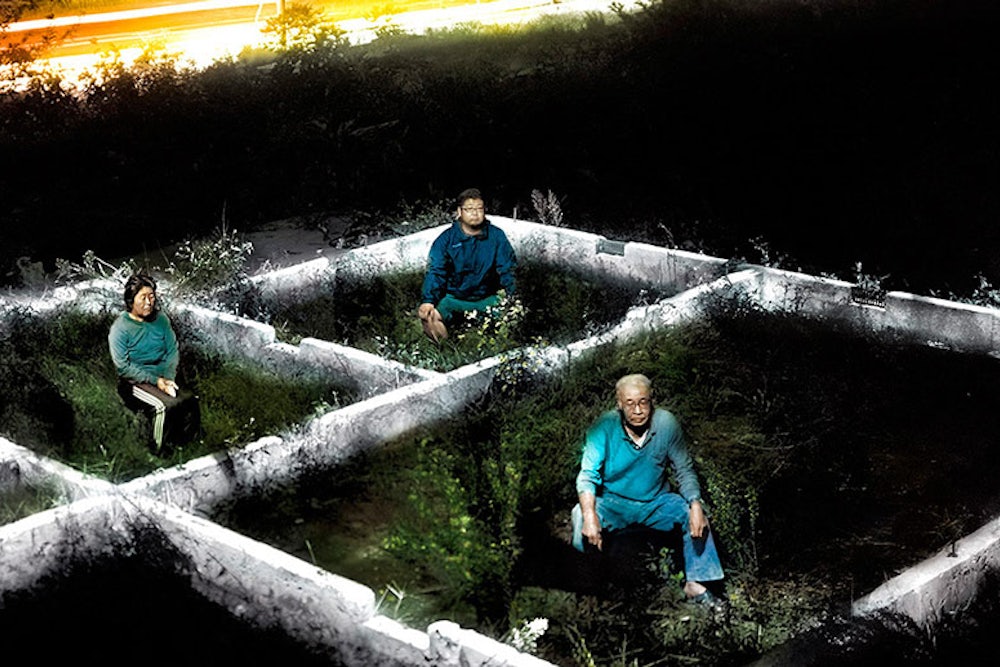On March 11, 2011, a 9.0 earthquake shook Japan, the most powerful earthquake in the island’s history. Communities on the coast were flattened by the tsunami that ensued minutes later, its crest peaking at 30 feet tall in certain areas, and traveling up to 6 miles inland.
Around 10 percent of the population of Otsuchi, a small fishing town, perished that day, including the mayor and other officials. Sixty percent of residential buildings were damaged.
A year and a half after the tsunami, Argentinian photographer Alejandro Chaskielberg made his first trip to Otsuchi. There, he found razed grasslands and debris. With the help of a Japanese curator he had previously worked with, he was introduced to local residents.

His ensuing project, Otsuchi Future Memories, portrays various members of the fishing town’s families in the places where their houses used to stand. Using long-exposure shots taken at night, with his subjects sitting for several minutes at least, his photos take on a solemn and meditative quality. The juxtaposition of families huddled among the ruins of their old, once-lively homes is jarring, as are the photographs of lost objects—abandoned and transformed by the power of the water.


Toward the beginning of his trip, Chaskielberg found a wet photo album on a roadside. The water damage to the photographs was severe, leaving page after page of blurred colors, lost moments. He decided to incorporate this item into his own photographs, which were shot in black and white with a 1960s 4 x 5 film camera. Once the negatives were scanned he would tint these images in a digital darkroom, applying the vibrant colors he found in the waterlogged photo album. “I realized that the people of Otsuchi, besides having lost their loved ones, relatives, homes and old way of life, had also lost their family photographs, that in some way forms part of their memories from the past. I started thinking about this idea and wondered how our memories interact with our family photographs, how we could retrieve a lost memory from a destroyed photograph,” he wrote. This idea became the crux of the project. The use of these colors serves to bridge the gap between past and present and serves to show the potent nature of memory.




Wary of him at first, the residents eventually came to see his project as part of the town’s rebuilding. (A photography workshop with local students helped him earn their trust.) One man eventually approached Chaskielberg with a drawer of his own wet, smudged family photographs.


